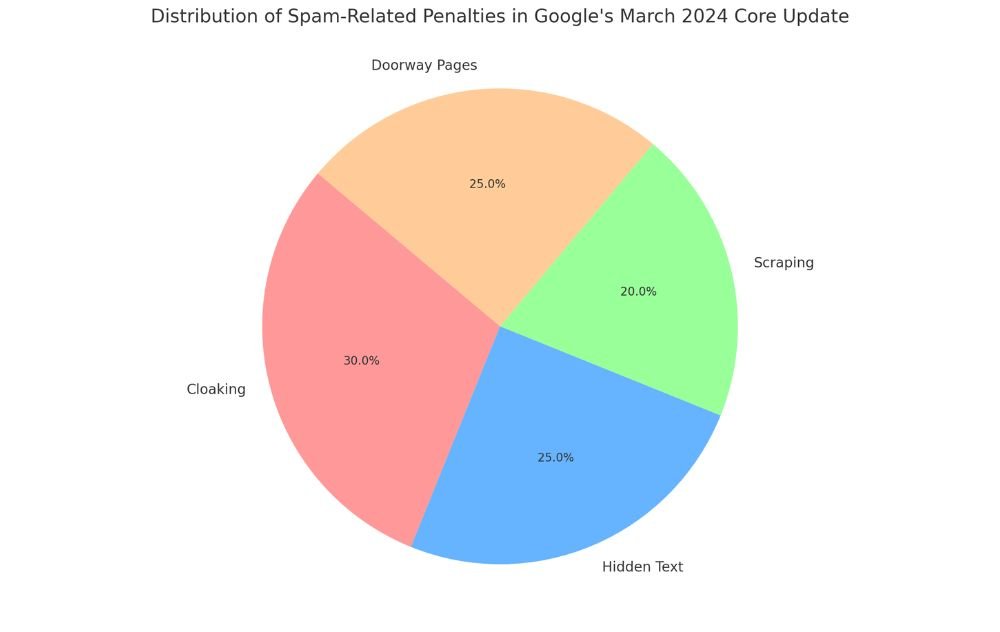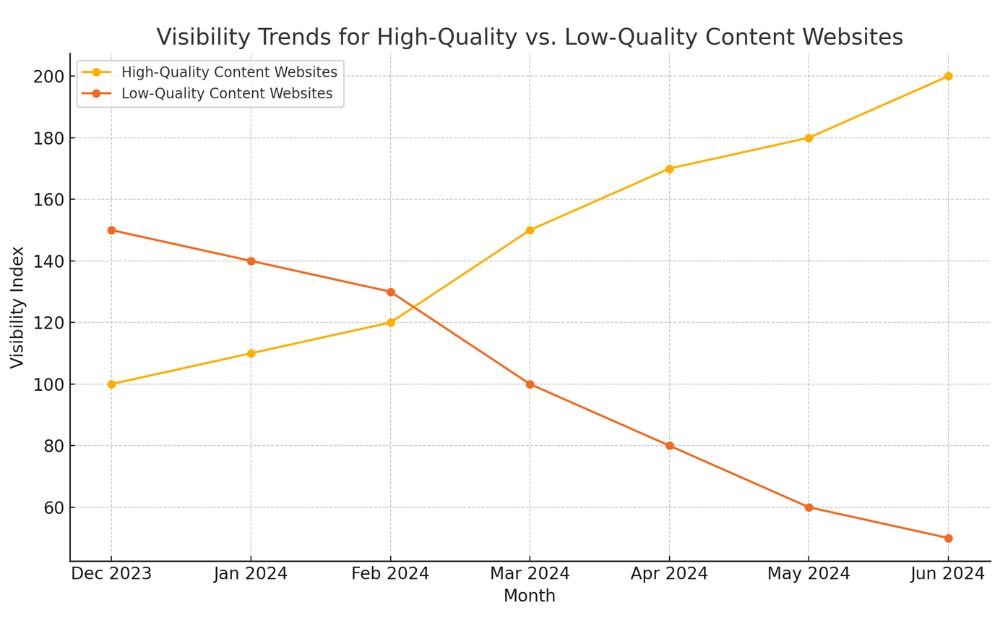
Learn How to Use Outreach Guest Posting!
Hey there! Have you ever wondered how to make your website more popular? Well, let’s talk about something called outreach guest posting. It’s been around for a while, but it’s changed a lot over the years.
Back in the day, people would write articles for other websites just to get a link back to their own site. But now, in 2024, it’s about so much more than that. Today, outreach guest posting is all about sharing great ideas and making new friends online.

Why is it still important in 2024? Because it helps you reach more people and show them that you’re an expert in what you do. Plus, it’s a great way to make your website show up higher when people search for things related to your business.
Here’s a quick look at how guest posting has changed:
- Before: Focused mainly on getting backlinks
- Now: Aims to provide value, build relationships, and establish authority
- Before: Quantity was key
- Now: Quality and relevance matter most
- Before: Often used generic, mass-produced content
- Now: Requires unique, tailored content for each opportunity
2. The New Era of Outreach Guest Posting
As noted in a report by Moz in 2023, content quality and relevance are more important than ever. Websites that focus on providing tailored, insightful guest posts have seen significant gains in organic traffic and search rankings. This shift away from mass-produced content reflects changes in Google‘s algorithms, which increasingly reward websites that offer real value to their audiences. By focusing on quality, you not only enhance your website’s reputation but also improve its visibility in search results, which is critical for long-term success.
To ensure your guest posts stand out and provide the value that search engines and audiences are looking for, follow these best practices:
- Do your research: Know what topics are hot in your field right now.
- Offer unique insights: Share your own experiences and lessons learned.
- Use data: Include interesting facts and figures to support your points.
- Tell stories: People love real-life examples that they can relate to.
- Solve problems: Focus on helping readers overcome common challenges in your industry.
Remember, a great guest post should leave readers thinking, “Wow, I learned something new and useful!”
3. Leveraging AI in Outreach Guest Posting
In recent years, AI’s role in content marketing has been well-documented. According to a 2023 study by Content Marketing Institute, over 60% of marketers now rely on AI-driven tools to streamline outreach and improve content relevance. This technology is reshaping guest posting by enabling more targeted pitches and improving content personalization. AI tools such as Jarvis AI and Grammarly are increasingly used for content optimization, ensuring that the writing resonates with both readers and search engines.
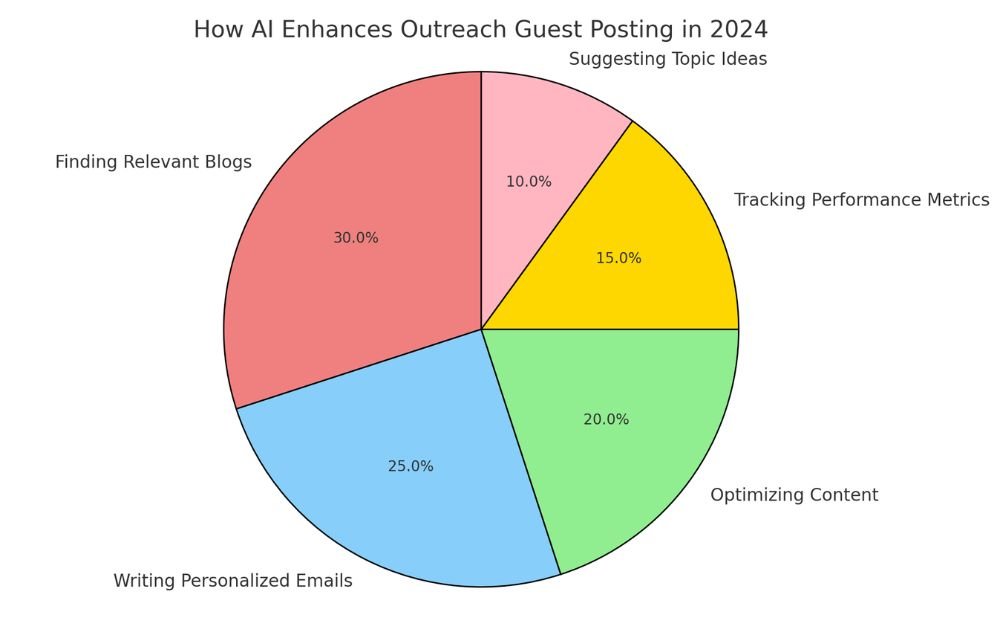
Here are some cool ways we use AI:
- Finding the right blogs: AI can help you find websites that would be perfect for your guest posts. It’s like having a personal matchmaker for your articles! AI tools can analyze thousands of blogs in seconds to find ones that match your topic and have an audience that would love your content.
- Writing emails: AI can help you write friendly emails to blog owners, asking if you can write for their site. It makes sure each email sounds personal and not like a robot wrote it. For example, an AI tool might suggest mentioning a recent article the blogger wrote and explaining how your guest post could expand on that topic.
- Creating content: While AI can’t write entire articles for you (that wouldn’t be fair!), it can help you come up with ideas and make your writing better. AI can suggest topic ideas based on what’s trending in your industry, help with research by finding relevant stats and studies, and even check your grammar and readability.
- Analyzing performance: AI tools can track how well your guest posts are doing. They can show you things like how many people read your post, how long they stayed on the page, and whether they clicked on any links.
Remember, while AI is super helpful, it’s still important to add your own human touch. Use AI as a helper, not a replacement for your own creativity and expertise!
4. Building Authentic Relationships in the Digital Age
Making real friends online is super important in 2024. When you do outreach guest posting, you’re not just trying to get your article on someone’s blog. You’re trying to make a new friend who shares your interests.
Here’s how to make and keep online friends:
- Be real: Don’t pretend to be someone you’re not. People like honesty!
- Stay in touch: Don’t just disappear after your article is published. Keep talking to your new blogger friends.
- Help each other out: If a blogger friend needs help, offer it. They’ll remember your kindness.
- Engage with their content: Read and comment on their blog posts, share their content on social media, and show genuine interest in their work.
- Collaborate on projects: Suggest working together on things like joint webinars, podcast episodes, or co-authored ebooks.
Some people have made great partnerships this way. For example, Sarah, a pet blogger, became friends with Tom, who runs a popular dog training website. They now work together on lots of cool projects!
Here’s how their partnership grew:
- Sarah first wrote a guest post for Tom’s blog about healthy homemade dog treats
- Tom’s readers loved it, and he invited Sarah to write more posts
- They started doing monthly Q&A videos together, answering pet care questions
- Now, they’re writing a book about holistic pet care and have a joint online course teaching pet owners about nutrition and training
By focusing on building real relationships, Sarah and Tom both grew their audiences and created exciting new opportunities for their businesses.
5. Creating Content That Resonates in 2024
In 2024, people love content that’s fun, interesting, and helpful. Here’s what works well:
- Stay up-to-date: Write about things that are happening right now in your field. For example, if you’re in the tech world, you might write about the latest AI developments or new gadgets.
- Use pictures and videos: People love visual stuff! Try adding infographics or short video clips to your articles. For instance, if you’re writing about cooking, include step-by-step photos or a quick video showing a tricky technique.
- Make it interactive: Can you add a quiz or a poll to your article? People love to participate! If you’re writing about fitness, you could include a quiz that helps readers find the best workout for their lifestyle.
- Tell stories: Share real-life examples or case studies. Stories help people connect with your content on an emotional level.
- Provide actionable tips: Give readers something they can do right away. If your article is about productivity, include a list of apps or techniques they can try today.
- Use headers and lists: Break up your content into easy-to-read chunks. This helps readers scan your article and find the information they need quickly.
- Add your unique voice: Let your personality shine through in your writing. Whether you’re funny, thoughtful, or straight-to-the-point, be yourself!
Remember, you want your article to be easy for search engines to find (that’s the SEO part), but you also want real people to enjoy reading it. It’s all about finding that perfect balance!
| Content Format | Engagement Rate | SEO Impact | User Retention |
|---|---|---|---|
| Text | Medium | High | Medium |
| Video | High | High | High |
| Images | Medium | Medium | Medium |
| Interactive Elements (quizzes, polls) | High | High | High |
6. Maximizing the Impact of Your Guest Posts
Incorporating SEO strategies into guest posting is essential for success in 2024. For example, keyword optimization ensures your guest post is discoverable by search engines. Use tools like Google Keyword Planner or Ahrefs to identify relevant keywords that have both high search volume and low competition. When including backlinks in your guest posts, ensure that they are naturally integrated and linked to relevant content on your site. Proper anchor text (e.g., using “effective dog training techniques” instead of “click here”) helps search engines understand the context of your link, further boosting your website’s SEO.
Additionally, internal linking is a powerful SEO tactic. When writing for external sites, look for opportunities to connect your guest post to other relevant articles on the host website. This not only adds value for readers but also signals to search engines that the content is well-connected and authoritative.
Once you’ve optimized your post for search engines, you want to make sure it reaches a wide audience. Here’s how you can maximize its impact:
- Smart linking: When you link back to your website, use words that describe what your page is about. For example, if you’re linking to a page about dog training, use “dog training tips” as the link text instead of just “click here.”
- Get influencers involved: If you know someone popular in your field, ask if they’d be willing to share your guest post. Their followers might become your new fans! You could even interview an influencer for your guest post, which gives them a reason to share it.
- Share everywhere: Don’t just post your article and forget about it. Share it on all your social media accounts. You could even talk about it in a YouTube video or a podcast.
- Create teasers: Make short versions of your content for different platforms. For example, you could create:
- A Twitter thread highlighting key points
- An Instagram carousel with eye-catching graphics
- A TikTok video summarizing your main ideas in a fun way
- Engage with comments: Respond to people who comment on your guest post. This shows you care about your readers and can lead to interesting discussions.
- Repurpose your content: Turn your guest post into other types of content. You could make a slideshow for SlideShare, create an infographic, or use it as the basis for a webinar.
- Follow up with more value: A week after your guest post is published, offer the blog owner a free resource (like a PDF guide or template) that complements your article. They can share this with their readers, giving you another chance to connect with their audience.
By using these strategies, you can make sure your guest post reaches as many people as possible and has a lasting impact!
7. Measuring Success in the Data-Driven Era
Tracking the SEO impact of your guest posts is crucial to measure success. Tools like SEMrush and Ahrefs can help monitor key metrics such as backlinks, keyword rankings, and organic traffic generated from your guest posts. Understanding which posts drive the most traffic and engagement enables you to refine your outreach strategy and focus on producing content that delivers the best SEO results. As noted in studies by Search Engine Journal, websites with consistently high-quality guest posts see significant improvements in domain authority and search rankings over time.
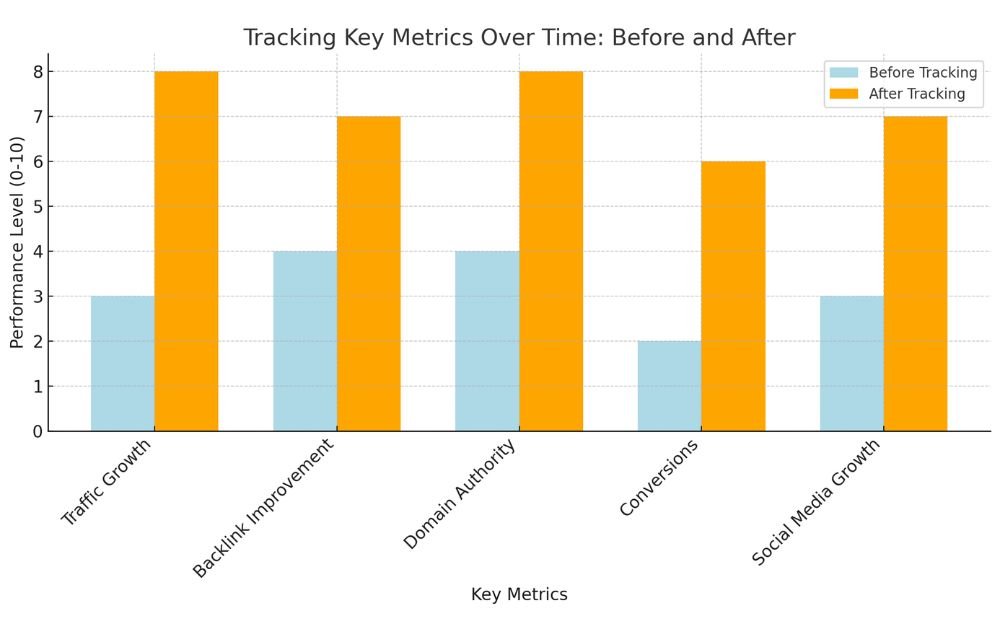
So, how do you know if your guest posts are performing well? In 2024, a range of advanced tools makes it easier to assess your content’s impact. Here are key metrics to track:
- Traffic: How many people are coming to your website from your guest posts? Tools like Google Analytics can show you exactly how many visitors you’re getting and which guest posts they’re coming from.
- Engagement: Are people leaving comments on your guest posts? Are they sharing them on social media? These are signs that your content is resonating with readers.
- Rankings: Is your website showing up higher in search results for keywords related to your guest posts? You can use tools like SEMrush or Ahrefs to track your rankings over time.
- Backlinks: Are other websites linking to your guest post? This is a sign that people find your content valuable. Tools like Moz can help you track new backlinks.
- Conversions: Are people taking action after reading your guest post? This could mean signing up for your newsletter, downloading a resource, or even becoming a customer.
- Brand mentions: Are more people talking about your brand online after your guest post? Tools like Google Alerts or Mention can help you track this.
- Social media growth: Have you gained new followers on social media platforms after your guest posts?
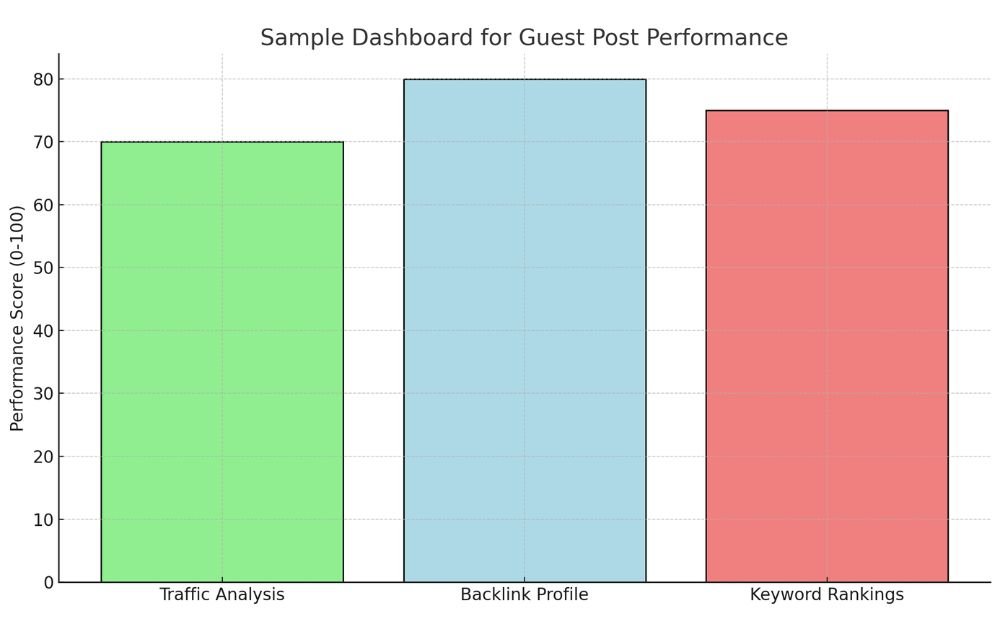
There are special tools and dashboards that can show you all this information in one place. Some popular ones include:
- Google Analytics: For tracking website traffic and user behavior
- Hootsuite: For managing and tracking social media engagement
- SEMrush: For tracking search rankings and backlinks
- Ahrefs: For comprehensive SEO analysis
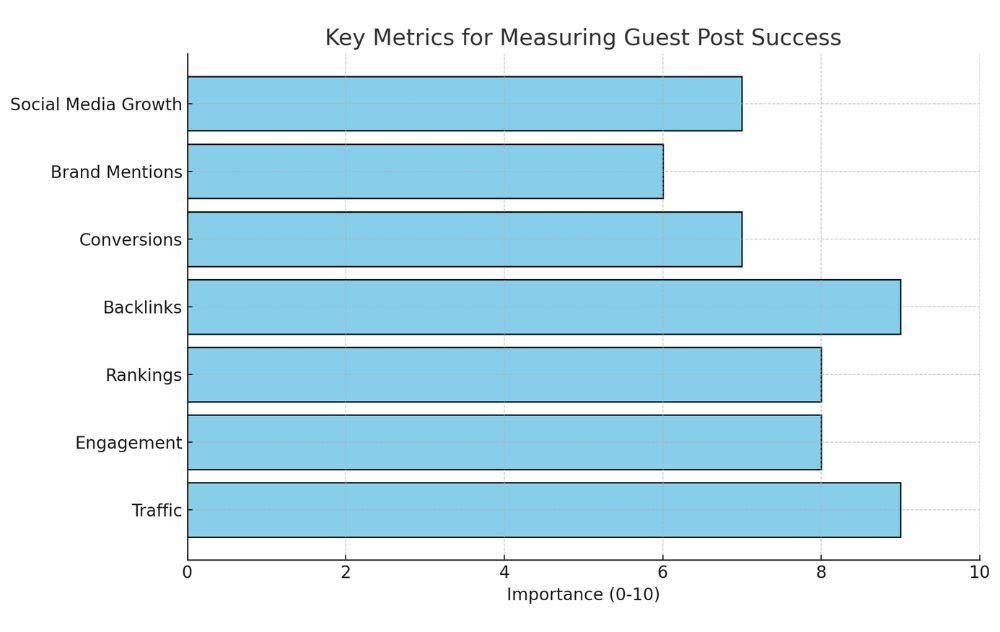
By looking at this data, you can figure out what’s working well and what you might need to change. For example, if you notice that guest posts on certain topics bring more traffic to your site, you might want to focus on writing more about those topics.
Remember, it’s not just about the numbers. Look for patterns and trends over time. Sometimes, a guest post might not bring tons of traffic right away, but it could lead to valuable partnerships or opportunities down the road.
8. Overcoming Modern Challenges in Outreach Guest Posting
Guest posting in 2024 isn’t always easy. Here are some challenges you might face and how to deal with them:
1. Lots of competition: So many people are trying to write guest posts! To stand out:
- Focus on writing about things that others aren’t talking about yet
- Bring a unique perspective or personal experience to your posts
- Offer exclusive data or research in your guest posts
2. Changing search rules: Google and other search engines are always changing how they decide which websites to show first. To stay on top:
- Keep learning about SEO best practices
- Focus on creating high-quality, valuable content (Google loves this!)
- Use natural language in your writing instead of stuffing it with keywords
3. Being real vs. being sponsored: Sometimes, blogs will ask you to pay to post on their site. This is okay, but:
- Always tell readers if your post is sponsored. Honesty is super important!
- Make sure the sponsored post still provides real value to readers
- Choose sponsored opportunities carefully – make sure they align with your brand
4. Finding new topics: It can be hard to come up with fresh ideas. Try:
- Using tools like BuzzSumo to see what topics are trending in your industry
- Asking your audience what they want to learn about
- Combining ideas from different fields to create unique angles
5. Building relationships at scale: As you do more guest posting, it can be hard to maintain relationships with all the bloggers you work with. To help:
- Use a CRM (Customer Relationship Management) tool to keep track of your contacts
- Set reminders to check in with bloggers regularly
- Create a system for following up after each guest post
6. Maintaining quality as you grow: As you write more guest posts, it can be tempting to cut corners. Instead:
- Develop a content checklist to ensure each post meets your standards
- Consider working with a trusted editor or proofreader
- Take breaks between writing sessions to stay fresh and creative
Overcoming Modern Challenges in Outreach Guest Posting: Table
| Challenge | Strategy to Overcome |
|---|---|
| High Competition | Focus on niche topics and personal insights. |
| Changing Search Engine Algorithms | Stay updated on SEO best practices and prioritize quality content. |
| Maintaining Content Quality as You Scale | Use a content checklist and work with a trusted editor. |
| Building Long-Term Relationships | Use CRM tools to maintain contact and follow-up consistently. |
| Sponsorship vs. Authenticity | Be transparent about sponsorships and always provide real value. |
Remember, every challenge is an opportunity to learn and improve. By facing these challenges head-on, you’ll become an even better guest poster!
9. The Future of Outreach Guest Posting
What’s next for guest posting? Here are some exciting possibilities:
- Virtual Reality (VR) guest posts: Imagine writing a post that people can experience in 3D! For example, a travel blogger could create a VR tour of a destination.
- Voice search optimization: As more people use voice assistants like Siri or Alexa, we might need to write guest posts that sound good when read aloud. This means using more conversational language and thinking about how people speak their search queries.
- AI collaboration: In the future, you might work with AI to create even better guest posts. AI could help with research, suggest structure improvements, or even help tailor your content for different audiences.
- Interactive content: Guest posts might become more like mini-apps, where readers can interact with the content in real-time. Think of slideshows where readers can input their own data, or articles with built-in calculators.
- Micro-content partnerships: Instead of full blog posts, you might create series of short-form content (like Instagram stories or TikTok videos) for other brands.
- Blockchain for transparency: Blockchain technology could be used to verify the authenticity of guest posts and track how they’re shared across the internet.
- Personalized content: AI might help create guest posts that adapt to each individual reader, showing different examples or explanations based on the reader’s interests or background.
To stay ahead, keep learning about new technologies and be ready to try new things in your guest posting strategy. Some ways to stay informed:
- Follow tech news websites and blogs
- Attend digital marketing conferences (in-person or virtual)
- Join online communities or forums where marketers discuss new trends
- Experiment with new tools and platforms as they emerge
Remember, the core of guest posting – sharing valuable information and building relationships – will always be important, no matter how technology changes!
10. Conclusion: Crafting Your Outreach Guest Posting Strategy for 2024 and Beyond
Wow, we’ve covered a lot! Here are the main things to remember:
- Focus on quality, not quantity. Write posts that really help people.
- Use AI to help you, but keep your human touch. AI is a tool, not a replacement for your creativity.
- Build real relationships with other bloggers. Make friends, not just business contacts.
- Create content that’s fun and helpful. Use stories, pictures, and interactive elements to engage readers.
- Share your guest posts far and wide. Use social media, email, and other channels to spread the word.
- Use data to see how well you’re doing. Track things like traffic, engagement, and conversions.
- Be ready to face challenges and adapt. The online world is always changing, so stay flexible.
- Keep an eye on the future of guest posting. Be ready to try new technologies and formats.
To get started with your outreach guest posting strategy:
- Set clear goals: What do you want to achieve? More traffic? Better brand awareness? New leads?
- Identify your target audience: Who are you trying to reach with your guest posts?
- Research potential blogs: Look for sites that reach your target audience and accept guest posts.
- Develop a content calendar: Plan out your topics and posting schedule.
- Create a pitch template: Make it easy to reach out to bloggers with your ideas.
- Start small and scale up: Begin with a few high-quality posts and gradually increase your efforts.
- Always provide value: Focus on helping the blog’s readers, not just promoting yourself.
Remember, outreach guest posting is all about sharing your knowledge and making new friends online. If you do it with enthusiasm and honesty, you’ll see your website grow and your online presence bloom!
Want to learn more? Check out websites like Moz, Search Engine Journal, or HubSpot for more tips on guest posting and digital marketing. And don’t forget – the best way to get better at guest posting is to start doing it. Good luck!
Frequently Asked Questions (FAQs)
Outreach guest posting is a content marketing strategy where you write articles for other websites to build relationships, share expertise, and earn backlinks to improve SEO.
In 2024, outreach guest posting remains crucial for building authority, increasing visibility, and boosting search engine rankings, while also fostering valuable partnerships.
AI can help by identifying relevant blogs, optimizing your email pitches, suggesting content ideas, and tracking the performance of your guest posts to maximize impact.
You can use AI tools like BuzzSumo, SEMrush, and Ahrefs to find blogs that align with your niche and audience, ensuring your guest posts reach the right readers.
Use tools like Google Analytics, SEMrush, and Ahrefs to track key metrics such as traffic, backlinks, keyword rankings, and conversions generated from your guest post.
A good guest post offers unique insights, solves a problem, and provides value to the readers while aligning with the host site’s content and audience.
Partner with ClickVisibility for Guest Posting Success
Looking to supercharge your outreach guest posting strategy? Let ClickVisibility help you achieve measurable results with expert guidance, SEO strategies, and high-quality content. Contact us today to start driving more traffic and improving your search rankings!




